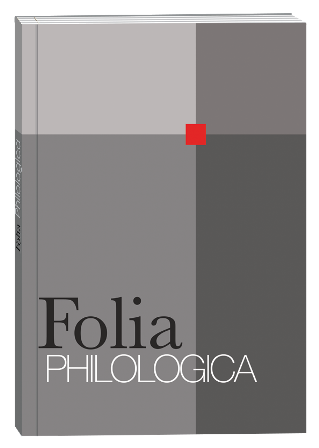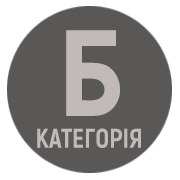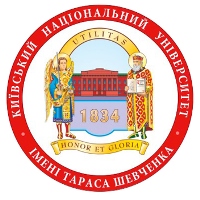INVENTORY OF USUAL AND USUAL-LEGITIMIZED MODELS OF PRODUCTION OF NON-VERBALIZERS OF HYBRID RUSSIAN-UKRAINIAN WAR OF 2014–2024
DOI:
https://doi.org/10.17721/folia.philologica/2024/7/1Keywords:
innovation, deviation, model deformation, polymotivate, usually legitimized model, neo-verbalizer, neogeneityAbstract
The article examines the most common models and types of neo-verbalizer production of the hybrid 2014–2024 Russian-Ukrainian war based on the Ukrainian-language segment of social network and media content. It is emphasized that in the study innovation is interpreted as a hyperonym, to which the hyponyms “neo-derivative” and “neo-verbalizer” are subordinated. The focus of attention is on the units formed on the basis of usual and usual-legitimized patterns. The analysis of the study material shows a high level of neogenicity. The range of extracted innovations indicates that innovations are often produced with varying degrees of deviation from the norm or usage, as well as with non-usual wordformation tools. The author notes a gradation from structural and semantic conformity of innovations to various degrees of deformation within word-formation models. There has been a recent tendency to legitimize new usage models that emerge on the basis of deformed common language patterns. Not only is there an atypical compatibility of the formative bases and formants, but also the expansion of the latter’s meanings through the layering of additional shades of meaning. The cases of extreme deviations of models involving formants from other code systems, mainly English, are described. It is established that innovations actively enter into word-formation relations, in which the level of word-formation tact is not significant and requires a comprehensive consideration of the entire chain. Some neo-verbalizers reach the top of word-formation nests. It is pointed out that the most productive and regular are the models producing suffix and prefix innovations of various part-of-speech nature, although combined word-formation types are also involved. The activation of an affixed word formation over the past ten years has been observed. The production of new units by means of pure or suffixation-related stem formation is demonstrated. It has been observed that word formation in the general range of innovations is represented by a smaller number of derivatives. Neogenicity within the militaristic discourse is not limited to these types, which is illustrated by means of inflectional innovations.
References
Diukar, K. (2023). Vidonimni neosubstantyvy v ukrainskomu mediinomu onlain-prostori voiennoho periodu: strukturno-semantychnyi aspect [Homonymous Neo-Substantives in the Ukrainian Online Media Space of the Wartime Period: Structural and Semantic Aspect]. Naukovyi visnyk Mizhnarodnoho humanitarnoho universytetu. Ser. “Filolohiia” [Scientific Bulletin of the International Humanitarian University. Ser “Philology”], 59 (1), 105–108 [in Ukrainian].
Greshchuk, V., & Greshchuk, O. (2022). Slovotvir i tekst: monohrafiia [Word formation and text: a monograph]. Ivano-Frankivsk: Prykarpatskyi natsionalnyi universytet imeni Vasylia Stefanyka [in Ukrainian].
Karpilovska, Ye. (2005). Neuzualne slovotvorennia: pravyla “hry bez pravyl” [Non-usual word formation: the rules of the “game without rules”]. Visnyk Kyivskoho natsionalnoho linhvistychnoho universytetutu. Seriia “Filolohiia” [Bulletin of Kyiv National Linguistic University. Series “Philology”], 8 (1), 106–117 [in Ukrainian].
Koloiz, Zh. (2002). Do pytannia pro dyferentsiatsiiu osnovnykh poniat neolohii [On the Differentiation of the Basic Concepts of Neology]. Visnyk Zaporizkoho derzhavnoho universytetu: Filolohichni nauky [Bulletin of Zaporizhzhia State University: Philological Sciences], 3, 78–83 [in Ukrainian].
Kysliuk, L. (2020). Uzual’ne j okazional’ne slovotvorennia v riznostyl’ovij movnij praktytsi [Usual and occasional word formation in multilingual language practice]. Ukrainska mova [Ukrainian language], 2, 31–44 [in Ukrainian].
Masenko, L. (1983). Rozvytok toponimichnoi leksyky [Development of toponymic vocabulary]. Istoriia ukrainskoi movy. Leksyka i frazeolohiia [History of the Ukrainian language. Vocabulary and phraseology]. Kyiv: Nauk. dumka [in Ukrainian].
Neliuba, A. (2009). Cherezkrokove slovotvorennia y innovatsiini yavyshcha v ukrainskii movi (na zrazkakh sufiksalnykh deryvativ) [Step-by-step word formation and innovative phenomena in the Ukrainian language (on the basis of suffix derivatives)]. Visnyk Dnipropetrovskoho universytetu. Seriia “Movoznavstvo” [Bulletin of Dnipropetrovsk University. Series “Linguistics”], 17 (15/1), 201–209 [in Ukrainian].
Remy, J. (2007). The Valuev circular and censorship of Ukrainian publications in the Russian empire (1863–1876): intention and practice. Canadian Slavonic Papers, 49 (1/2), 87–110 [in Ukrainian].
Romanyshyn, A., Cherevychnyj, S., Ostapchuk, O., Maraieva, V., Vitiuk, V., & Khrulenko, I. (2023). 100 brekhlyvykh rosiiskykh naratyviv pro rosiisko-ukrainsku viinu: zbirnyk informatsiino-analitychnykh materialiv [100 false Russian narratives about the Russian-Ukrainian war: a collection of information and analytical materials]. Kyiv: Naukovodoslidnyj tsentr humanitarnykh problem Zbrojnykh Syl Ukrainy Publ. [in Ukrainian].
Snyder, Timothy (2022). The War in Ukraine Has Unleashed a New Word. The Times. Retrieved from: https://www.nytimes.com/2022/04/22/magazine/ruscism-ukraine-russia-war.html.
Styshov, O. (2022). Neologisms of the Military Sphere in the Modern Ukrainian Language. Logos (Lithuania), 113, 116–128. https://doi.org/10.24101/logos.2022.79.









